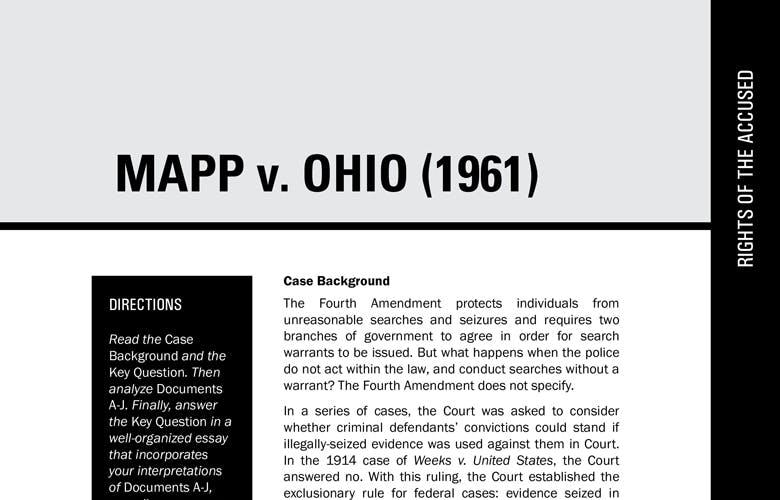Mapp v. Ohio Case Background
DIRECTIONS
Read the Case Background and the Key Question. Then analyze Documents A-J. Finally, answer the Key Question in a well-organized essay that incorporates your interpretations of Documents A-J, as well as your own knowledge of history.
Case Background
The Fourth Amendment protects individuals from unreasonable searches and seizures and requires two branches of government to agree in order for search warrants to be issued. But what happens when the police do not act within the law, and conduct searches without a warrant? The Fourth Amendment does not specify.
In a series of cases, the Court was asked to consider whether criminal defendants’ convictions could stand if illegally-seized evidence was used against them in Court. In the 1914 case of Weeks v. United States, the Court answered no. With this ruling, the Court established the exclusionary rule for federal cases: evidence seized in violation of the Constitution may not be used at trial. Among the early critics of the exclusionary rule was Appeals Court Judge Benjamin Cardozo. Cardozo famously objected in 1926, “The criminal is to go free because the constable has blundered.”
About thirty-five years later in 1949, the Court declined to apply the exclusionary rule to the states through the Fourteenth Amendment’s Due Process Clause, reasoning that states could use other methods of ensuring due process of law.
When Mapp v. Ohio reached the Court in 1961, it was not initially seen as a Fourth Amendment case. Dollree Mapp was convicted under Ohio law for possessing “lewd, lascivious, or obscene material.” Mapp appealed her conviction. She based her claim on First Amendment grounds, saying that she had a right to possess the materials. When the case reached the Supreme Court, however, the Justices did not address her First Amendment claim. The Court instead overturned her conviction because the evidence against her had been seized without a warrant. In so ruling, the Court applied the exclusionary rule to the states. The exclusionary rule remains controversial. Supporters say it ensures liberty and justice, while critics claim it actually threatens those values.
